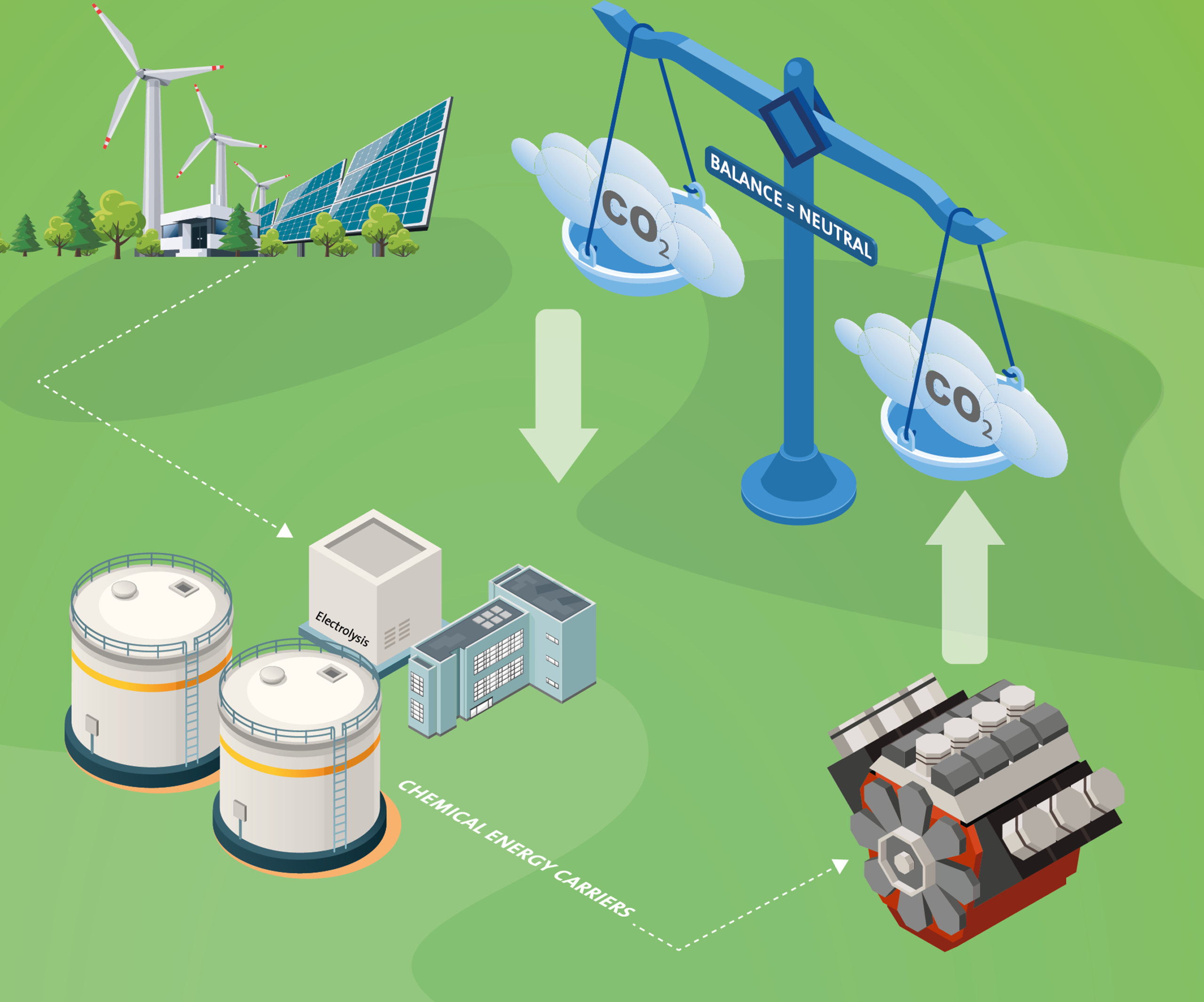Mission 4
Internal combustion engines convert renewable chemical energy carriers efficiently and carbon-neutrally into mechanical energy. This means that also existing engines can be operated on a CO2-neutral basis.
Basically, an internal combustion engine converts the energy contained in the fuel into mechanical energy. The principle is around 150 years old and well proven. In addition to reducing harmful emissions, engine development in recent decades has focused particularly on increasing efficiency. This has led to ever more efficient engines. Today, large engines in particular those used to power ships, achieve efficiencies of around 50%. If the waste heat is also used effectively, as it is the case in stationary CHP plants, for example, efficiency can be increased to over 90%. This means that almost the entire energy input of the fuel can be used effectively.
When fossil fuels such as diesel or natural gas are used in combustion engines, CO2 emissions are produced. he solution: chemical energy sources produced from renewable sources. When these are combusted in the engine, only as much CO2 is released as was absorbed during the production of the chemical fuel. This means that the engines are CO2-neutral when operated with these fuels. The trick is that this works not only with new engines specially developed for this purpose, but in the vast majority of cases also with engines that are already in operation and that previously relied on fossil fuels. When you consider that the useful life of engines is often very long – large ship engines, for example, are designed for a useful life of 20 to 30 years – it quickly becomes clear that the CO2 balance of the existing fleet can only be rapidly improved by using renewably generated energy sources. Not to mention the fact that there are no technology alternatives to the internal combustion engine in sight for the specific application of ocean-going shipping.
The fact that the existing engines cannot be replaced but can continue to be operated is another important contribution to sustainability, and for the distribution of the regeneratively generated chemical energy sources, the existing infrastructure through which fossil energy sources have been distributed up to now can continue to be used (see Mission 3). Fossil energy sources can therefore be replaced very quickly and very straightforwardly.


